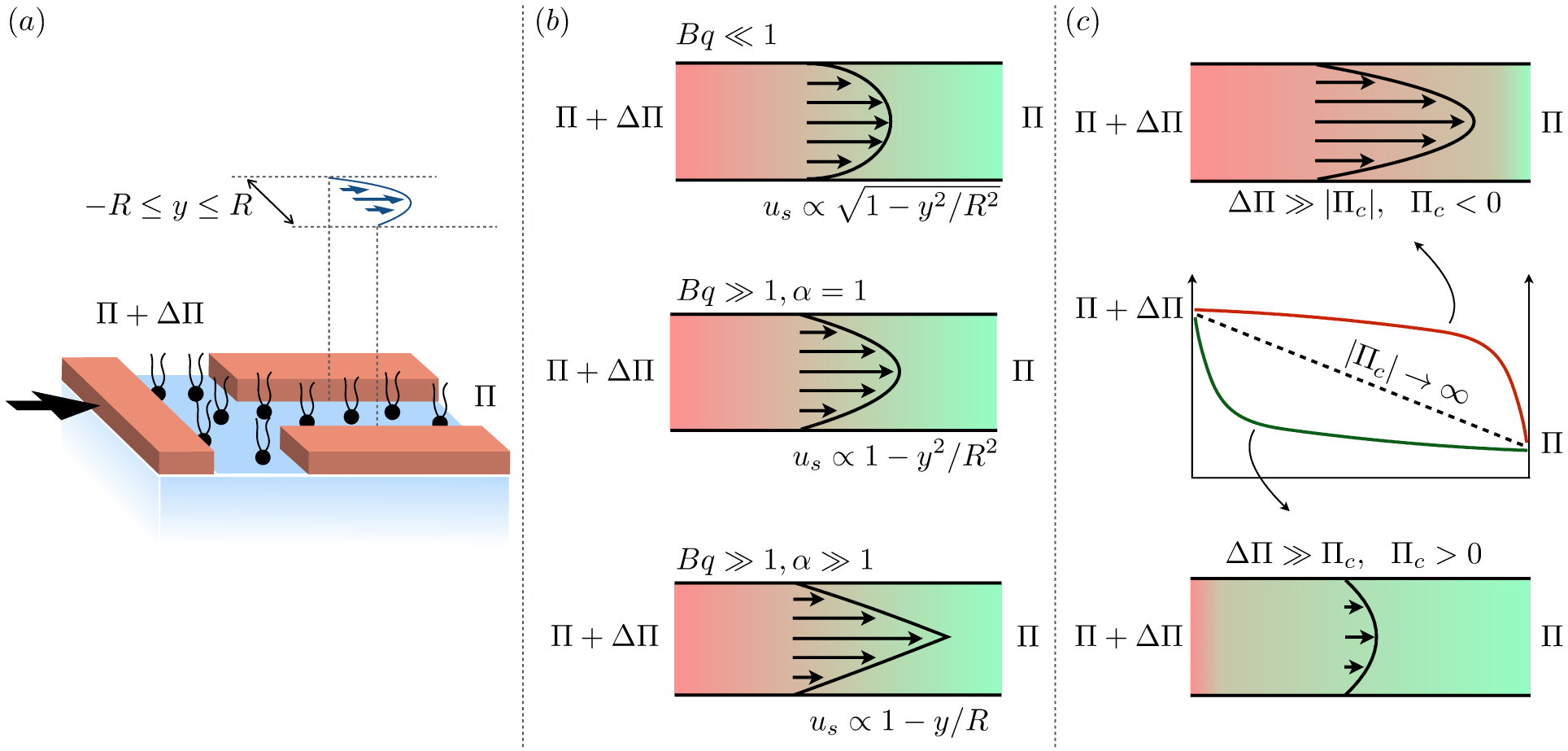Figure 29.

(a) A surface pressure gradient across an interfacial channel sets up a surface (and bulk) flow, much pressure-driven flow in 3D. (b) Illustrations of surface velocity profiles, with α defined in (5.19): us(y) is elliptic when subphase-dominant (Bq ≪ 1) and parabolic when interface-dominant (Bq ≫ 1) with Newtonian surface rheology. However, condensed arachidic acid above Π ~ 20 mN/m surface-shear-thickens, resulting in triangular velocity profiles (5.19). The background color gradient represents Π(x), which changes linearly across the length of the channel. (c) Surface pressure distribution in the channel is nonlinear when ηs is a function of Π. When Π-thinning, surface pressure remains of the order of the driving pressure ΔΠ for the majority of the channel and thus pumps a larger surfactant flux, effectively increasing the permeability of the channel. By contrast, surface pressure drops rapidly at the channel entrance when Π-thickening, which maintains a relatively small gradient across the rest of the channel, thereby ‘choking’ the surface flow.
